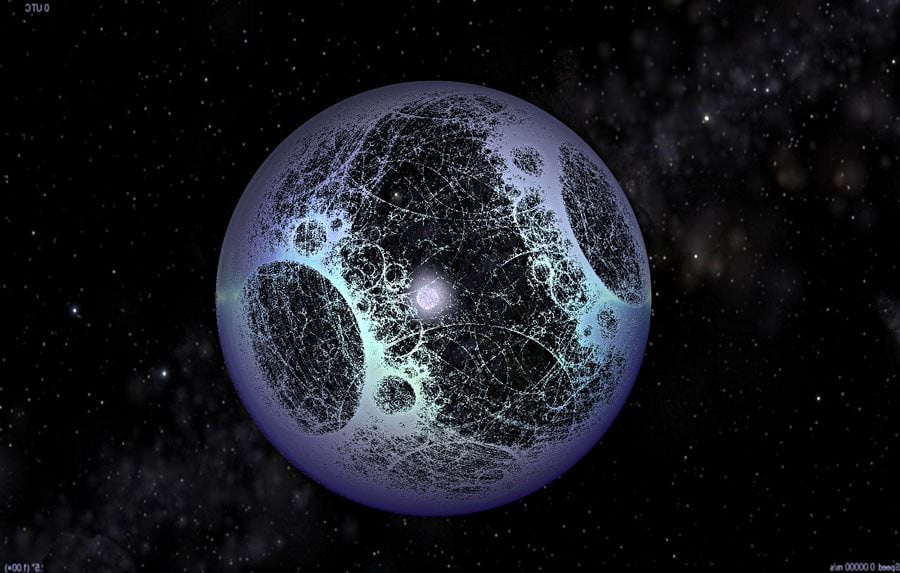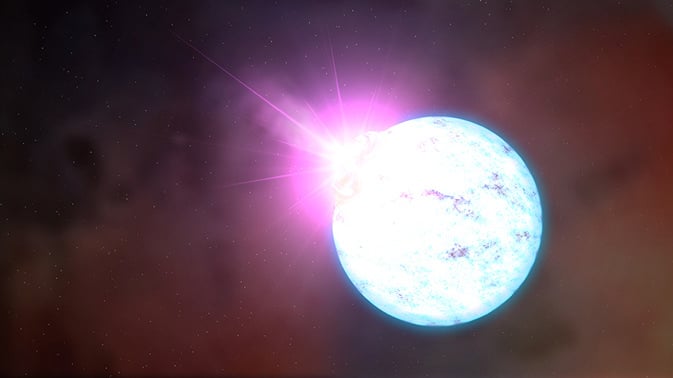
Thanks to an amateur astronomer, the latest image to come from the Rosetta mission provides of glimpse of the surface of Comet 67P and reminds us of the mission's accomplishments.
Continue reading

Microsoft has teamed up with researchers to create a time capsule using synthetic DNA, which will be sent to the Moon in 2020.
Continue reading

Researchers from UCF have developed a standarized, scientific way to create Martian soil simulant, which could accelerate efforts to colonize the Red Planet!
Continue reading

The tiny hopping robot explorer called method has completed its 16 hour mission to asteroid Ryugu.
Continue reading

Continue reading

Based on Gaia's second data release, a team of astronomers from the Leiden Observatory have observed hyper-velocity stars that appear to be moving into our galaxy.
Continue reading

Ready for one more? While all eyes are still following Comet 21/P Giacobini-Zinner as it glides through northern hemisphere skies, we'd like to turn your attention towards another icy interloper: periodic Comet 38P Stephan-Oterma.
Continue reading

Continue reading

Continue reading

A new study by a team of UC Berkeley researchers has shown that black holes are not the long-sought-after source of dark matter
Continue reading

Continue reading

The Japanese spacecraft Hayabusa2 recently deployed its rovers to the surface of the asteroid Ryugu, which then sent back some stunning images!
Continue reading

Continue reading

A tiny actuator on a sample arm on the Curiosity rover gave the first indication that a storm on the red planet was a global Martian dust storm.
Continue reading

A Japanese-Australian team is developing a new way to remove space junk from orbit and sending it harmlessly towards Earth.
Continue reading

NASA recently deployed a technology demonstrator called the RainCube, a miniature satellite that could revolutionize how we monitor weather
Continue reading

The mysterious "Death Comet" which flew past Earth in 2015 is coming around again, and will once again pass Earth safely on November 11th.
Continue reading

NASA recently released its National Space Exploration Campaign Report, detailing a sustainable plan to return to the Moon and go to Mars
Continue reading

A NASA workshop on Technosignatures paves the way for a new approach to the search for intelligent life.
Continue reading

Dazzling images from the JunoCam show the intricate detail of Jupiter's Great Red Spot. Is the Solar System's longest-lived storm shrinking?
Continue reading

Based on Cassini data, an international team of scientists found evidence of dust storms on Titan, yet another thing it has in common with Earth.
Continue reading

Continue reading

With the recent Martian dust storm clearing, NASA managed to spot the Opportunity rover on the surface, though communications have yet to resume.
Continue reading

In a new experiment, a team of researchers used laser pulses to accelerate photons to near the speed of light, which could have immense applications for space flight and particle physics.
Continue reading

In a recent tweet, SpaceX founder Elon Musk indicated that his company may be able to build a Martian colony as early as 2028.
Continue reading

A team of researchers in the UK have observed matter falling into a black hole at 30% the speed of light. They may have discovered why black holes in the early universe grew so quickly.
Continue reading

An international team of astronomers have used data from the Gaia satellite to backtrack 'Oumuamua to one of four star systems.
Continue reading

Continue reading

Continue reading

The Parker Solar Probe recently collected its first-light data in order to test its instruments, and snapped some beautiful pictures of the cosmos.
Continue reading

Continue reading

A new study has shown that "nuclear pasta", which exists beneath crust of a neutron star, is the strongest material is the Universe.
Continue reading

Continue reading

Using information from Gaia's second data release, a team of scientists have made refined measurements of the mass of the Milky Way.
Continue reading

In a new study, astrophysicists used the gravitational waves from last year's kilonova event to determine if the Universe has additional dimensions.
Continue reading

Continue reading

In a recent study, a team of Harvard University scientists presented a new means of ruling out alternative explanations for how our Universe began.
Continue reading
Continue reading

Following the Moon lately? The up and coming Full Moon is the most famous of them all, as we approach the Harvest Moon for 2018.
Continue reading

From SpaceX's headquarters in California, Elon Musk announced who will be the first lunar tourist to hitch a ride aboard the company's Big Falcon Rocket (BFR)
Continue reading

A new study by an international team of researchers has indicated the need for artificial gravity to mitigate the effects of microgravity on astronauts' eyesight.
Continue reading

Continue reading

A new NASA-led study shows that Proxima b could support the existence of an ocean on its dayside, which means it could still be habitable.
Continue reading

The Sunspot Solar Observatory has been temporarily shut down and evacuated due to a security threat.
Continue reading

A new video released by the ESO illustrates the construction of the Extremely Large Telescope, which will be the world's largest telescope once it is completed.
Continue reading

At the recent Bengaluru Space Expo in India, the ISRO unveiled the spacesuit that it's astronauts will wear during the countries first crewed mission to space.
Continue reading

A new Hubble image of Saturn and six of its Moons reminds us how visually stunning Saturn is.
Continue reading

A new study has offered the first definitive proof that Mars' northern lowlands were once covered in a liquid water ocean.
Continue reading

Frightening images of Hurricane Florence taken from space highlight the dangerous power of the storm.
Continue reading

When the ESO's Very Large Telescope can't pursue its science objectives, it spends its time capturing stunning image of fascinating celestial objects.
Continue reading

 Universe Today
Universe Today














































